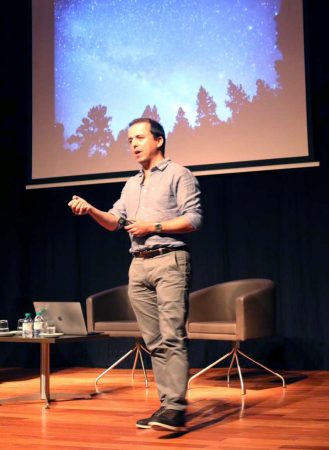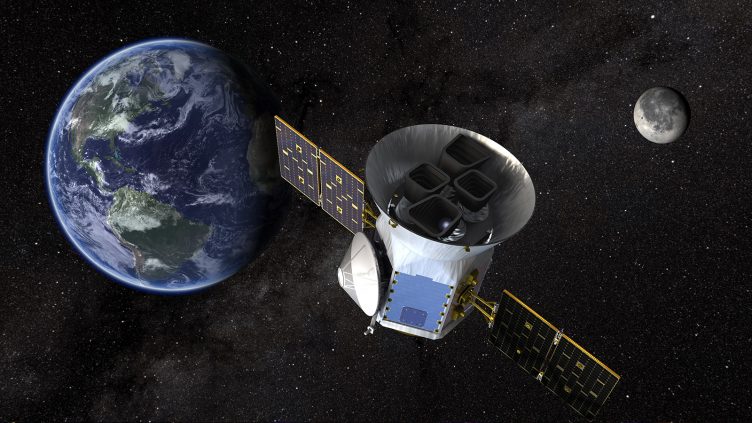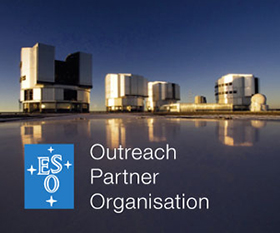The project “PULSATION” is featured in CORDIS, which gathers results from all UE funded research.
The European Commission’s Community Research and Development Information Service (CORDIS), has featured Instituto de Astrofísica e Ciências do Espaço (IA1) project PULSATION in its “Results in Brief”. CORDIS is the European Commission’s primary source of results for all projects funded by the EU’s framework programmes for research and innovation.

PULSATION Principal Investigator Tiago Campante (IA & Faculdade de Ciências da Universidade do Porto – FCUP) is very proud of this highlight: “Having our project featured by the European Commission fills every researcher involved, our host institution (CAUP/IA) and our communication partner (Ciência Viva) with pride. But on a bigger picture, it’s about the recognition of IA’s cutting edge research at the highest level, and the ability its researchers have to secure and efficiently use European funds”.
The research goal of this Marie Curie Action was to use photometry from the TESS (NASA) satellite to systematically detect and characterize exoplanets transiting oscillating evolved stars. Data from the satellite was also used to characterize known evolved planet-host stars, by using transit2 photometry, asteroseismology3, and radial-velocity4 follow-up measurements from the ground.
The outcome of this action has the potential to provide new insight into some of the outstanding problems in exoplanetary science, namely, on the occurrence rate of gas-giant planets as a function of stellar mass, on the correlation between stellar metallicity and giant-planet occurrence around evolved stars, and on the structural aspects of gas-giant planets.
PULSATION also had a commitment to improve public awareness of the increasingly engaging topic of exoplanets. As part of this action, a debate cycle was organized, in collaboration with the national network of Ciência Viva science centers, which took PULSATION PI Tiago Campante and selected guest researchers to 12 different Ciência Viva Centers, from all over the country.
PULSATION “Results in Brief” available here.
Notes
- The Instituto de Astrofísica e Ciências do Espaço (Institute of Astrophysics and Space Sciences – IA) is the reference Portuguese research unit in this field, integrating researchers from the University of Lisbon and the University of Porto, and encompasses most of the field’s national scientific output. It was evaluated as “Excellent” in the last evaluation of research and development units undertaken by Fundação para a Ciência e Tecnologia (FCT). IA’s activity is funded by national and international funds, including FCT/MCES (UIDB/04434/2020 e UIDP/04434/2020).
- The Transits method measures the dimming of starlight produced when an exoplanet crosses in front of its star (something similar to a “micro-eclipse”). A transit enables for the determination of the planets’ radius only. It’s also a difficult method to use, because it requires that both planet and star be exactly be in line with the observers’ line of sight.
- Asteroseismology is the study of stellar interiors, by measuring seismic oscillations at the star’s surface. In seismology, the different vibration modes from an Earthquake can be used to study the Earth’s interior, in order to get data from the composition and depth of its different layers. In a similar fashion, oscillations at the star’s surface can be used to infer the internal structure and composition of a star.
- The Radial Velocity method detects exoplanets measuring tiny variations in the (radial) velocity of the star, due to the motion that an orbiting planet induces in the star. As an example, the speed variation that the Earth imprints in the Sun is of about 10 cm/s (about 0.36 km/h). With this method you can set a minimum value for the planets’ mass.
Contacts
Tiago Campante
Science Communication Group
Ricardo Cardoso Reis ; Sérgio Pereira ; Filipe Pires (Coordenação, Porto) ; João Retrê (Coordenação, Lisboa)


